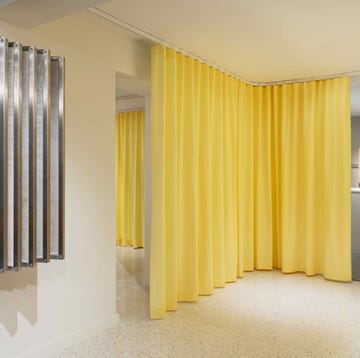Tweed can be a difficult fabric to pin down. In one telling, it is as old as the hills, owing its existence to the dramatic landscapes in Scotland and Ireland that at once inspired the colouring of the textiles, provided the dyestuffs and the need for rugged, felt-like cloth for those living there. In another version of events, it is a relatively recent invention, the result of a clerk who was working at a London cloth merchants in 1826, who misread the word ‘tweel’ – Scots for ‘twill’ – on an invoice and marketed the goods as ‘tweed’ instead, sparking a legend.
To get down to more practical definitions, though, tweeds are traditionally medium- to-heavyweight fabrics, produced in a myriad of colours and weave-effects, depending on where they are made. They are generally produced using a ‘twill weave’, which creates a fabric with a diagonal rib through the textile, but the variations are endless. Popular examples include the Gun Club (originally called Coigach, after the Scottish peninsula), houndstooth or Prince of Wales check, and Balmoral, the latter supposedly designed by Prince Albert himself after he bought the estate in 1852.
Originally made and worn by peasants, tweeds provided a very tough, warm and weatherproof fabric, ideal for working on the land. Despite containing lots of colours, some of them bright, tweeds usually appear earthy at a distance, and feature hues that echo the landscapes they originate from. This camouflaging aspect was beneficial during the 19th century, when it became fashionable for English landed gentry to rent or buy Scottish estates to go hunting and fishing. Tweeds became part of the experience, since clothing made from these fabrics provided a protection against the elements and helped wearers blend into their surroundings while stalking.
What's everyone reading?
The very same qualities that made them essential when spending days outdoors also make tweeds a smart choice for the home: warm, robust, hard-wearing, water-resistant and, depending on the variety selected, very forgiving with stains. They can be dressed up or down, play very well with other prints and patterns, and exude a confident sense of British taste and heritage.
After collaborating with designer Ben Pentreath on a collection of interiors fabrics that included tweeds last year, Johnstons of Elgin is releasing a collection of woollen tweeds this autumn. The range comprises most of the classics, including ‘Gun Club’, ‘Herringbone’ and ‘Houndstooth’ iterations.
For something a bit lighter, Camira created ‘Main Line Twist’, a textile made with a mix of wool and flax, in 15 different colourways. Meanwhile, Loro Piana launched a luxury Harris tweed called ‘Hebrides’ at Paris Design Week. Not a bad year for a fabric that may or may not be as old as the hills.

















